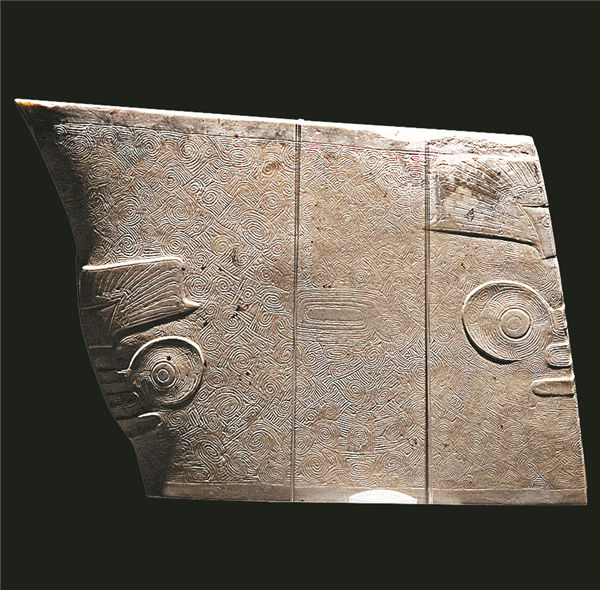Reading between the lines
The jade fitting for a scepter. [Photo by Gao Erqiang/China Daily]
"The jade cong's discovery in 1986 was crucial: it didn't take long for people to look around and realize that this is a recurring theme. In fact, it's ubiquitous," continues the 55-year-old, who has just compiled an oral history comprised of the recollections of those involved with the Liangzhu site over the past four decades, including Qiang and himself. It is due to be published later this year.
Among other items, the pattern can also be found on a jade axe (known as yue) and a scepter unearthed from the same tomb. Although the wooden sections for both items have long turned into dust — in the case of the scepter, only the jade fittings remain — archaeologists were able to piece together the disparate parts that lay not far from each other.
All three artifacts are part of an exhibition held by the Shanghai Museum focusing on the Liangzhu culture.
Judging by the items' relative position to the human skeleton upon their discovery, it seems that the deceased had rested his head upon the jade cong, while holding the axe, with the scepter placed horizontally across his chest. "From the stone axe, something Liangzhu people worked with and fought with, evolved the jade axe, a symbol of military might. Its proximity to the jade scepter — clearly representing kingly power — and the jade cong suggests an overlapping of the worldly and the ethereal," says Wang. "This is someone who had assumed the status of a divine ruler."
-
'Nice' to meet you, Hangzhou
May 6, 2024




